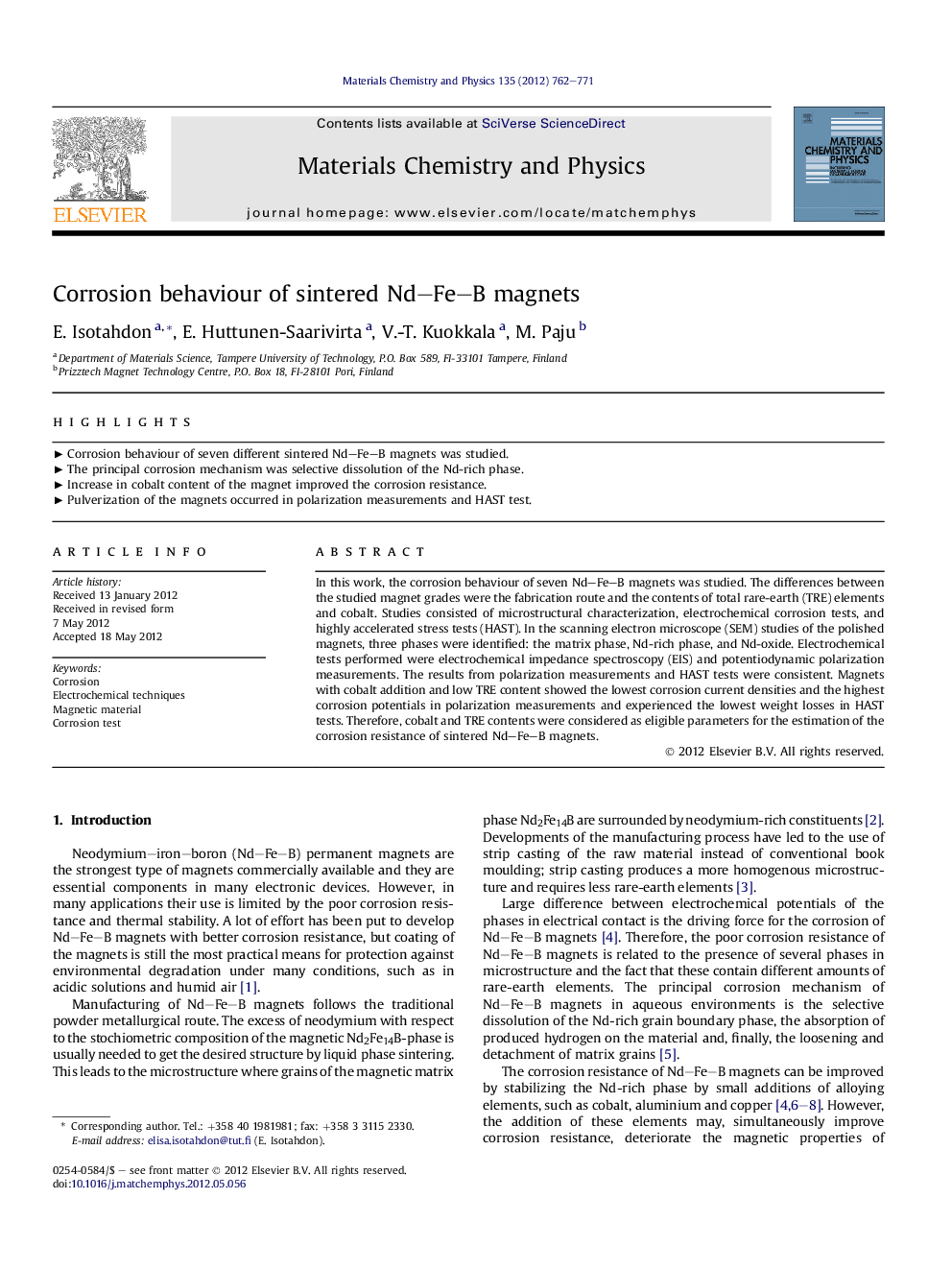| Article ID | Journal | Published Year | Pages | File Type |
|---|---|---|---|---|
| 1523132 | Materials Chemistry and Physics | 2012 | 10 Pages |
In this work, the corrosion behaviour of seven Nd–Fe–B magnets was studied. The differences between the studied magnet grades were the fabrication route and the contents of total rare-earth (TRE) elements and cobalt. Studies consisted of microstructural characterization, electrochemical corrosion tests, and highly accelerated stress tests (HAST). In the scanning electron microscope (SEM) studies of the polished magnets, three phases were identified: the matrix phase, Nd-rich phase, and Nd-oxide. Electrochemical tests performed were electrochemical impedance spectroscopy (EIS) and potentiodynamic polarization measurements. The results from polarization measurements and HAST tests were consistent. Magnets with cobalt addition and low TRE content showed the lowest corrosion current densities and the highest corrosion potentials in polarization measurements and experienced the lowest weight losses in HAST tests. Therefore, cobalt and TRE contents were considered as eligible parameters for the estimation of the corrosion resistance of sintered Nd–Fe–B magnets.
► Corrosion behaviour of seven different sintered Nd–Fe–B magnets was studied. ► The principal corrosion mechanism was selective dissolution of the Nd-rich phase. ► Increase in cobalt content of the magnet improved the corrosion resistance. ► Pulverization of the magnets occurred in polarization measurements and HAST test.
